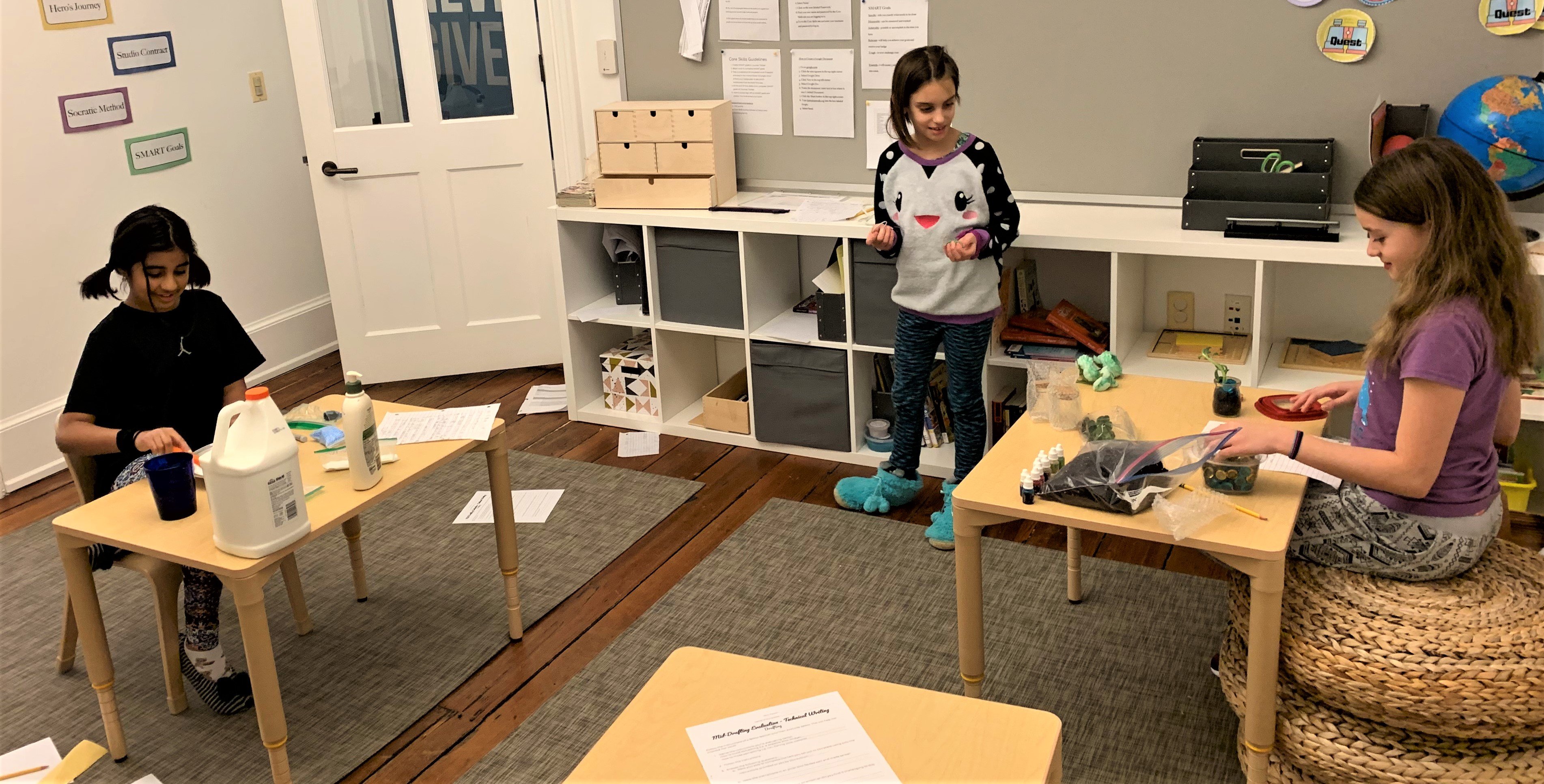 Not only does a new quest begin every session, but a new Writer’s Workshop as well. Challenges in Writer’s Workshop afford the learners opportunities to make connections and to apply the knowledge they have gained during the hands-on projects of quest time. A past session’s Writer’s Workshop focus was technical writing, a genre closely connected with creating and revising code, the main learning objective of the coding quest.
Not only does a new quest begin every session, but a new Writer’s Workshop as well. Challenges in Writer’s Workshop afford the learners opportunities to make connections and to apply the knowledge they have gained during the hands-on projects of quest time. A past session’s Writer’s Workshop focus was technical writing, a genre closely connected with creating and revising code, the main learning objective of the coding quest.
Every Writer’s Workshop moves through five phases: pre-writing, drafting, revising, editing, and publishing. During pre-writing, learners analyze world-class examples and brainstorm ideas; they then draft ideas according to the badge requirements and focus trait of the session; once a first (or second) draft is complete, they share their work with a peer for feedback and revise; in the final step before publishing a work ready for public exhibition, learners edit for spelling, punctuation, and grammar.
The primary challenge of this workshop is to compose two sets of instructions: one set explains how to make something (i.e. a bracelet or slime) and the other explains how to build something (i.e. a popsicle stick bridge). During the pre-writing phase, the learners analyzed various sets of world-class instruction examples, like Mastering the Art of French Cooking by Julia Child. They also followed and evaluated a number of other examples, like instructions for making a popsicle stick boat, frog origami, and how to do the perfect push up. Finally, they chose their two topics and moved in to the drafting phase.
After drafting their first set of instructions, the learners had the opportunity to test out another’s instructions. They each completed a Mid-Draft Evaluation Sheet, giving each other feedback on ways to make their instructions more clear and concise.
The purpose of this Writer’s Workshop is to practice writing in a logical and organized manner. The learners are asked to put themselves in the shoes of their reader: Would I prefer all the information at once or in smaller pieces? Does this tell the reader exactly what to do? Are these instructions in the correct order? By the end of the workshop, learners should have at least one set of published instructions that meet these standards.